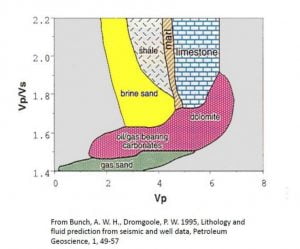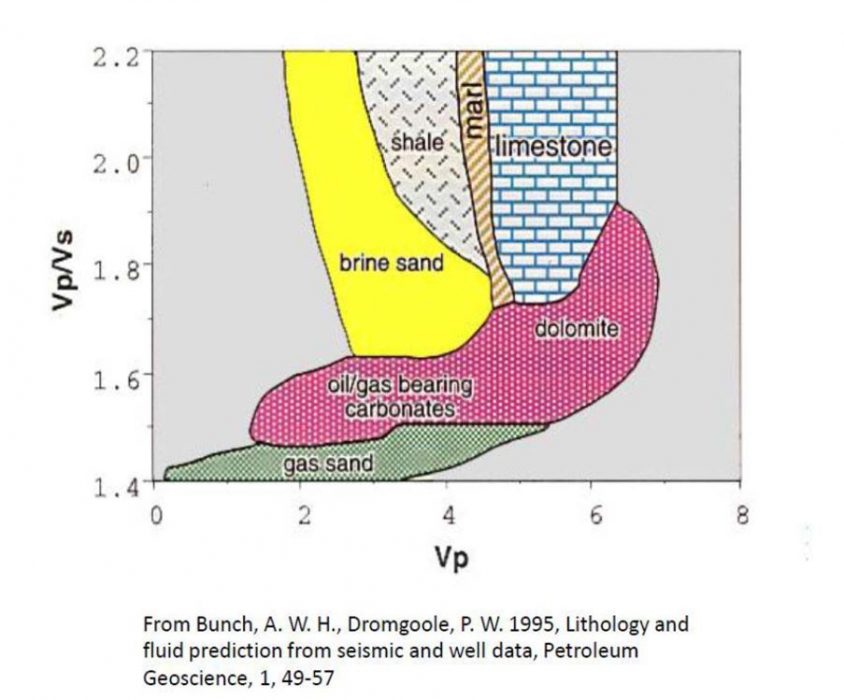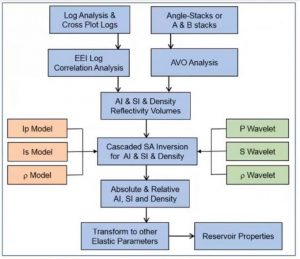Post-stack inversion estimates rock acoustic impedance which is not unique in identifying lithology and fluid contents of reservoirs. Further elastic properties are required to predict formation properties.
The goal of pre-stack seismic inversion is to obtain reliable estimates of P-wave velocity (VP), S-wave velocity (VS), and density (ρ) from which to predict the fluid and lithology properties of the subsurface of the earth.
Rocks have a number of elastic properties. The diagram below comes from a Bunch & Dromgoole paper (cited below the diagram). Petrophysical analysis relates these seismic properties to rock properties such as lithology, fluid content, porosity, net pay and permeability in the reservoir, and is used to predict lateral variations in rock properties.
The diagram shows how a single inversion is useful, but it doesn’t give as much information as you could get if you had multi elastic properties available to plot, leading to very precise reservoir characterisations.
Kingdom PSI does not work on seismic gathers. Instead it works primarily with Angle Stacks and existing technology available to the user through existing post-stack SA tools (SA Inversion) to run for acoustic, shear impedances and density. The results are equivalent to those of simultaneous 3-parameter pre-stack inversion.
So, prior to running PSI, SA Inversion is used to generate the P-wave impedance, S-wave and density reflectivity volumes.
More elastic parameters can be derived from Vp, Vs and density. These include Acoustic Impedance, Shear Impedance, Poisson’s ratio, Vp/Vs, Poisson’s Ratio, Lambda*Rho, Mu*Rho, Lambda/Mu, Young’s Modulus and Elastic Impedance (EEI).
Kingdom PSI then displays all the elastic logs and cross-plots any pair of elastic logs in either linear or logarithmic scales. Prestack Seismic Inversion takes the following seismic data:
- P and S wave reflectivity stacks (Rp and Rs) from Fatti’s 2-term AVO analysis
- The Intercept and gradient stacks from Shuey’s AVO analysis. These two stacks are then converted to Rp and Rs stacks
- Minimum 2 angle stacks, which are then converted to Rp and Rs or density stacks.
Shear impedance and density models are likely to be transformed from a Hidef Vp model
- Wavelets are estimated from S-wave and density reflectivity volumes
- Acoustic, shear impedance and density, both absolute and relative are the fundamental products from pre-stack inversion.
Available April 2020.


